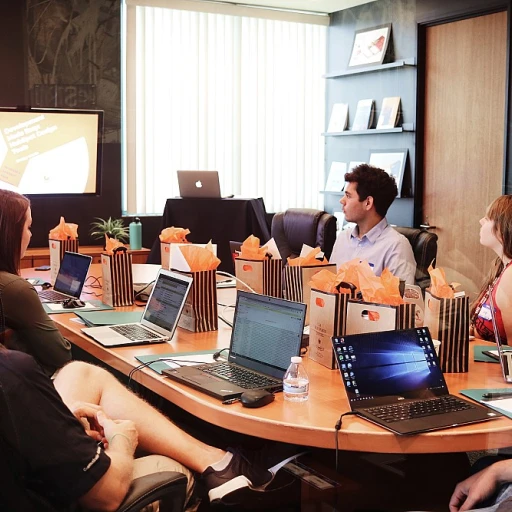
Understanding HR Enablers
Unveiling the Hidden Drivers of HR Progress
In the evolving landscape of human resources, the concept of HR enablers has gained significant traction. These enablers serve as the backbone of successful human capital strategies, allowing organizations to foster an environment conducive to growth and transformation. At their core, HR enablers are crucial elements that support the implementation of effective people management practices and drive business success.
These components often encompass a wide array of factors, including technology adoption, decision making processes, and data-driven strategies. For instance, leveraging workforce analytics can empower organizations to make strategic decisions, optimize talent management, and enhance employee experience. Moreover, integrating a robust management system such as SAP SuccessFactors can facilitate seamless workforce planning and performance management across cloud-based platforms.
It's not just about the tools and systems; the human experience at the organization is integral for achieving sustainable development. Business leaders need to cultivate an operating model that prioritizes employee engagement and continuous learning. In this dynamic environment, leadership development becomes a focal point, ensuring that leaders are equipped to guide change management initiatives effectively.
As organizations navigate these complexities, aligning HR enablers with strategic business objectives is paramount. This alignment ensures that the workforce operates at optimal performance levels, ultimately contributing to the organization's overall success and transformation journey.
The Role of Technology in HR Innovation
How Technology Advances HR Practices
The business landscape is increasingly dominated by technology, transforming the way organizations manage their most valuable asset: their people. In the realm of human resources, technology enablers like SAP SuccessFactors and other cloud-based platforms are pivotal in revolutionizing traditional methods, facilitating a seamless and efficient HR transformation. Emerging trends such as data-driven decision making and workforce analytics are transforming HR departments into strategic business enablers. These technologies not only support more precise workforce planning but also enhance talent management and leadership development initiatives. By leveraging advanced analytics, organizations can gain insights into employee performance and engagement, enabling effective performance management and fostering a robust employee experience. Moreover, systems like Employee Central and other management systems allow for efficient data management and organized workflow processes. These platforms ensure that employees and leaders are aligned with the company’s strategic objectives, thereby driving business growth and success. Human resources technology also facilitates a dynamic change management process, empowering organizations to adapt quickly to changes in the operating model. By embedding continuous learning into the employee experience, HR technology helps cultivate a talent-rich environment poised for development and innovation. Revolutionizing Employee Compensation with Pay On Demand explores another revolutionary aspect of HR technology, showcasing how such systems enhance business efficiency while improving employee satisfaction.Building a Culture of Continuous Improvement
Fostering an Environment of Ongoing Improvement
In today's rapidly transforming business landscape, creating a culture of continuous improvement is vital for human resources teams. By embracing this mindset, organizations can ensure their workforce remains competitive, adaptive, and aligned with strategic objectives. A culture focused on advancement and development directly impacts employee engagement, satisfaction, and ultimately the organization's overall success. To establish such an environment, businesses must prioritize several key elements:- Encouraging Employee Involvement: Empower employees to identify areas for improvement within their roles. Involving team members in decision-making fosters a sense of ownership and commitment to the organization's growth. By leveraging platforms like SAP SuccessFactors, HR leaders can harness valuable insights into employee performance and development needs.
- Promoting Learning and Development: Continuous learning initiatives, such as workshops or training sessions, help employees acquire new skills and knowledge. This not only enhances individual performance but also aligns workforce capabilities with the organization's strategic direction. Incorporating cloud-based solutions can streamline the management and accessibility of learning programs.
- Implementing Data-Driven Strategies: Utilizing workforce analytics is essential for tracking progress and making informed decisions. By analyzing data on employee performance and talent management, HR teams can identify trends, measure the impact of initiatives, and adjust strategies as needed. This data-driven approach supports effective and targeted improvements.
- Adopting Agile Practices: In a constantly evolving workplace, adopting agile methodologies can encourage adaptability and innovation. By promoting flexible work models and embracing change management, organizations can ensure their HR practices are responsive to market demands.
- Leadership Commitment: Sustained improvement requires strong commitment from business leaders. By championing a culture of innovation and continuous development, leaders set the tone for the entire organization to follow.
Leadership and Change Management
Leading the Charge: Guiding Change within Organizations
In today's rapidly evolving business landscape, the role of leadership and change management has never been more crucial in driving transformation within human resources. As organizations adapt to new technologies and operating models, leaders must effectively navigate the transformation journey to ensure a seamless integration of innovations. A successful change management strategy begins with recognizing the importance of leadership in aligning employees with the organization's strategic objectives. Business leaders need to be equipped with leadership development tools and approaches that not only foster personal growth but also cultivate a culture of trust and transparency within their teams. Key Drivers for Successful Leadership:- Communication: Open and consistent communication is essential for guiding employees through change. It helps to alleviate uncertainties and keeps the workforce informed of ongoing transformations and expected outcomes.
- Vision: Leaders must provide a clear and compelling vision that aligns with the company’s strategic objectives. This enables employees to understand the broader purpose of their work, which in turn boosts engagement and commitment.
- Empowerment: Encouraging employee empowerment through learning and development opportunities is vital. This not only boosts employee engagement but also promotes a culture of continuous improvement and innovation.
Measuring the Impact of HR Innovations
Assessing the Value and Success of HR Innovations
In measuring the impact of HR innovations, business leaders must focus on both qualitative and quantitative metrics to gauge how these initiatives improve organizational performance. Leveraging data-driven approaches and workforce analytics is key in identifying success factors and driving decision making for future HR strategies.
When evaluating any transformation within the HR landscape, the integration of tools such as SAP SuccessFactors and cloud-based management systems can provide insights into employee engagement, talent management, and overall employee experience. These resources enable leaders to streamline operations and facilitate more strategic workforce planning. Consequently, organizations can align talent development with business goals, ensuring that their human capital is optimized for success.
To truly measure the impact of HR innovations, companies need to put in place robust performance management frameworks. These should assess various aspects of the employee journey, highlight potential areas for improvement, and provide a measurable return on investment. By employing human analytics, HR departments can capture trends that emphasize the strengths and areas for improvement within their workforce, thus tailoring development plans to enhance both individual and organizational outcomes.
Ultimately, continuous analysis and review of HR innovations are critical. As operating models evolve, consistent evaluation helps adjust strategies, ensuring sustainable growth and adaptability in a rapidly changing business environment. This process not only fortifies existing HR systems but also reinforces an organization’s commitment to cultivating an agile and engaged workforce.
Overcoming Challenges in HR Innovation
Strategies for Navigating HR Innovation Obstacles
Innovation in human resources presents a myriad of challenges that organizations need to navigate effectively to thrive. By addressing these challenges head-on, HR leaders can transform these obstacles into opportunities for growth and development. Here are key strategies to consider:- Engage Business Leaders: Effective management of HR innovation requires the involvement of business leaders who understand the organization's strategic vision. Their leadership development is critical as they can drive transformation by aligning HR initiatives with broader business goals.
- Facilitate Data-Driven Decision Making: Utilize workforce analytics to gain actionable insights into employee performance and engagement. A cloud-based management system, such as SAP SuccessFactors, can provide crucial information, enabling informed decision-making that supports the organization's overall success. Data-driven strategies can pinpoint areas of improvement, tailoring development programs to specific needs.
- Overcome Resistance to Change: As referenced in understanding change management, fostering a culture that embraces new methods is vital. Leaders must communicate the benefits of HR innovations clearly, supporting employees through adjustments to the operating model. This can improve the human experience and elevate employee central to their role within the organization.
- Invest in Technology Training: To fully leverage technological advancements in HR, organizations need to prioritize learning and development. By investing in employee training programs that focus on new systems and process integrations, businesses can ensure smooth transitions and increased workforce efficiency.
- Align with Employee Needs: Listen to employees to enhance the employee experience. By aligning innovation strategies with workforce planning and engagement needs, organizations can better manage talent and foster an environment conducive to high-performance management.












